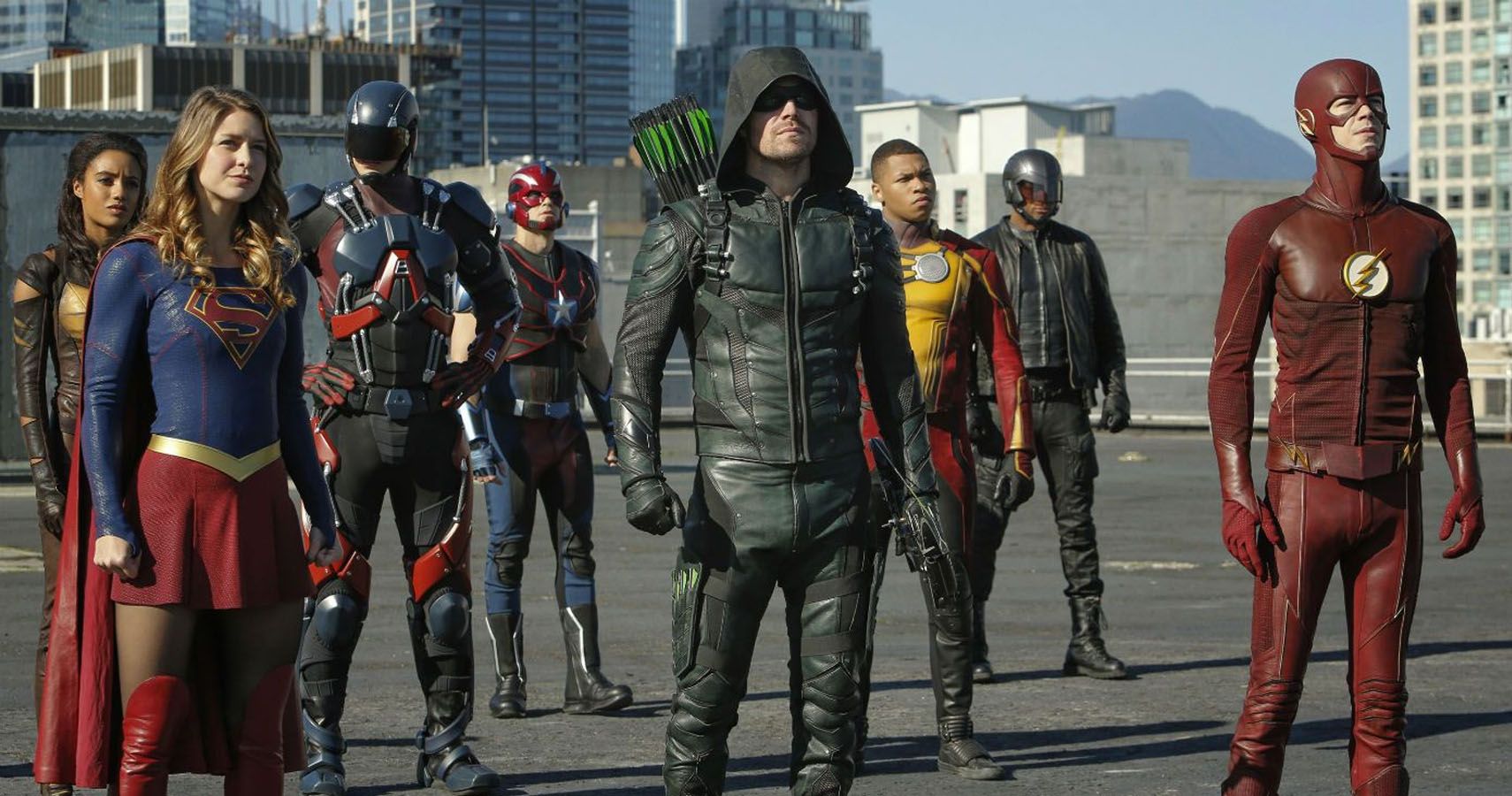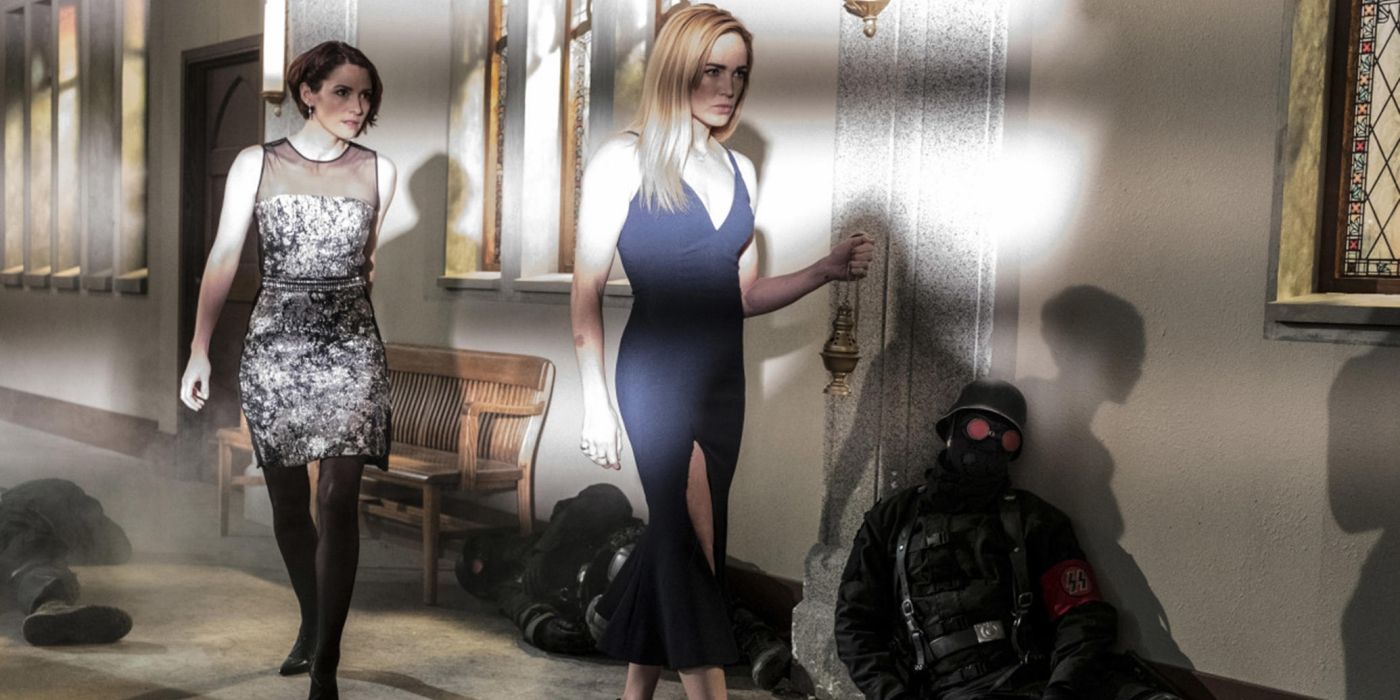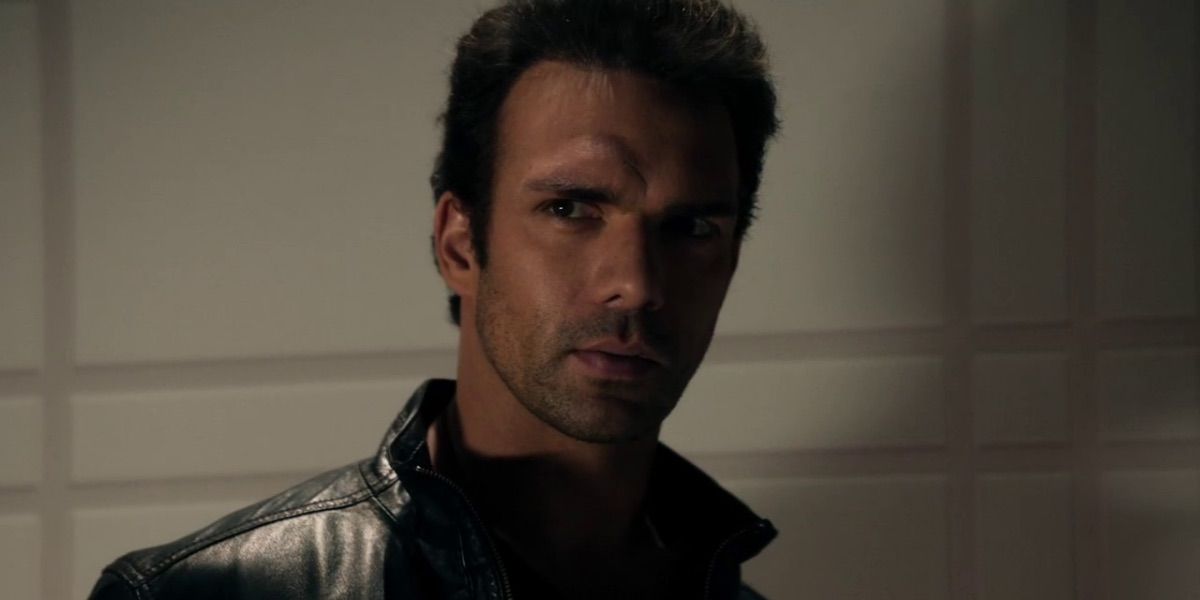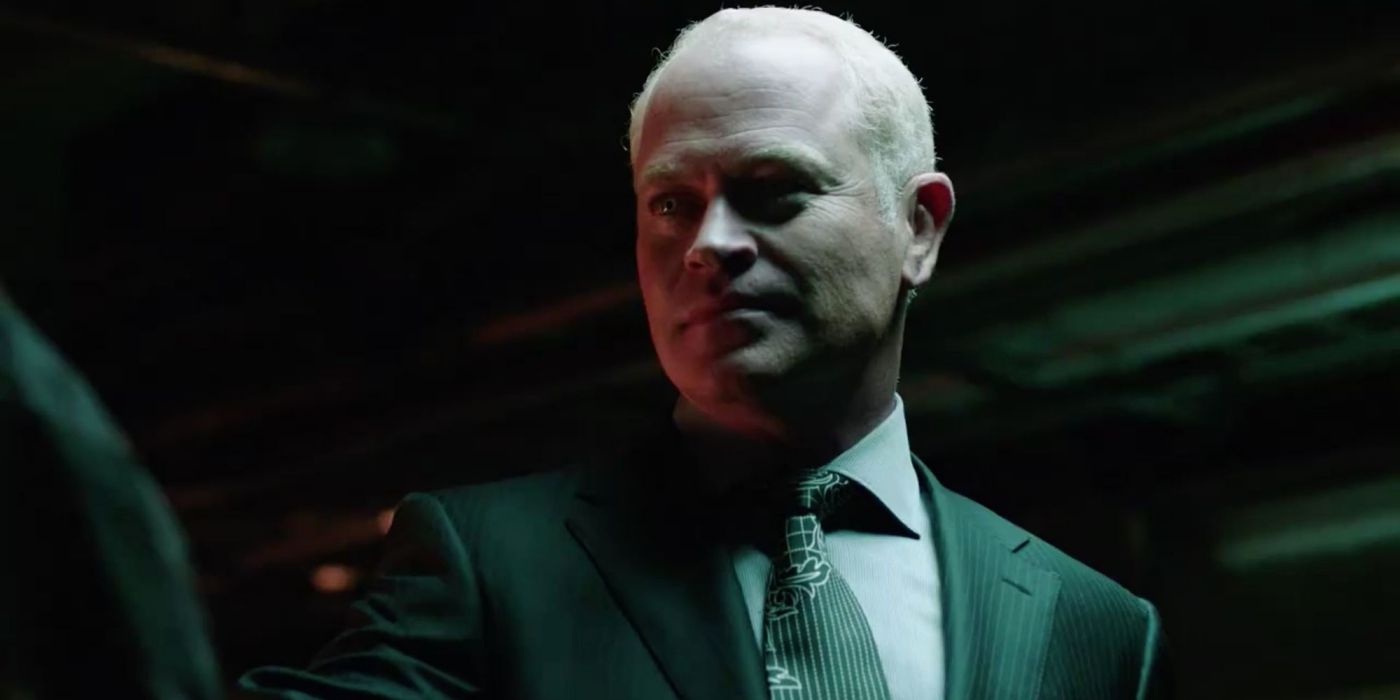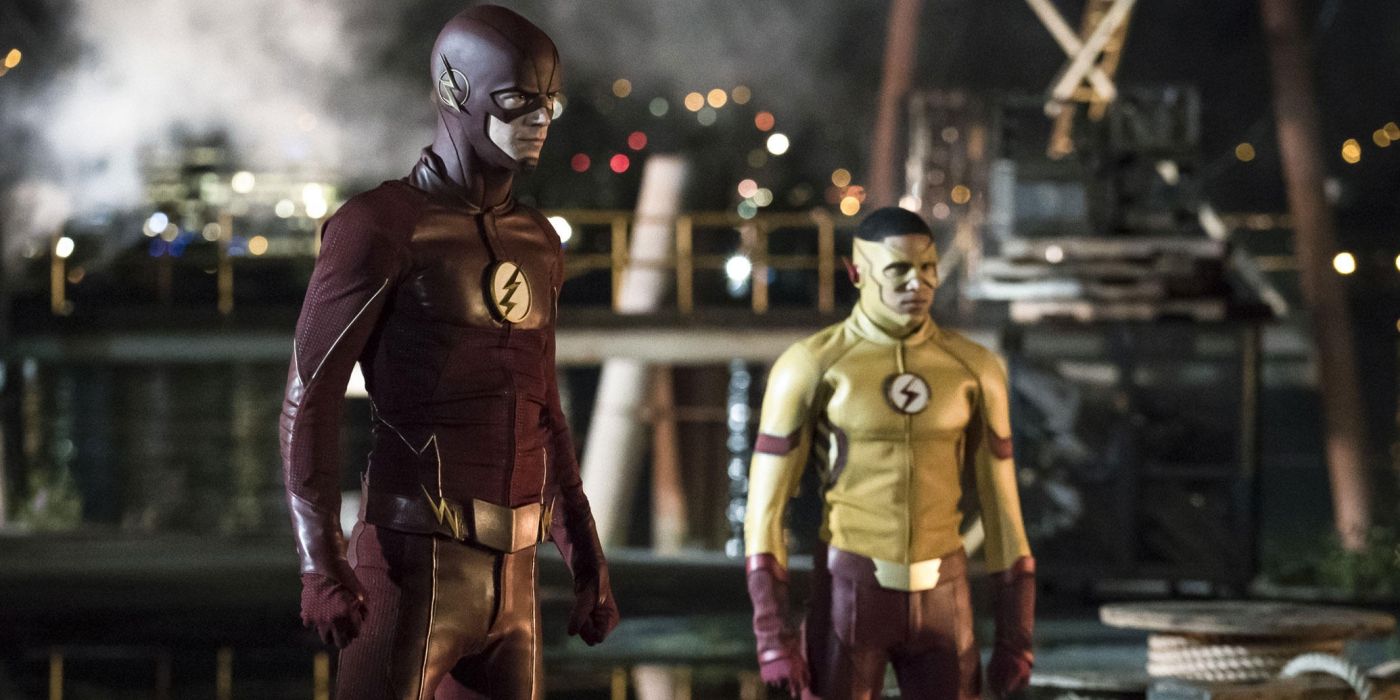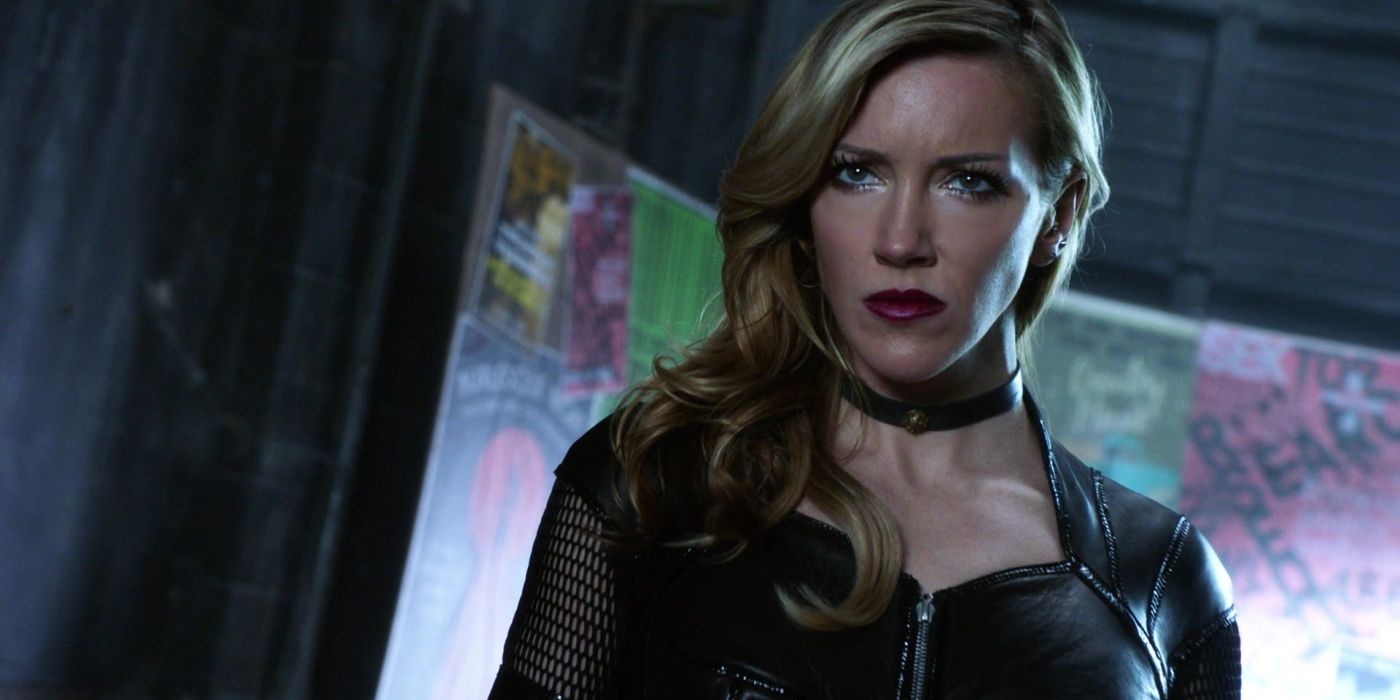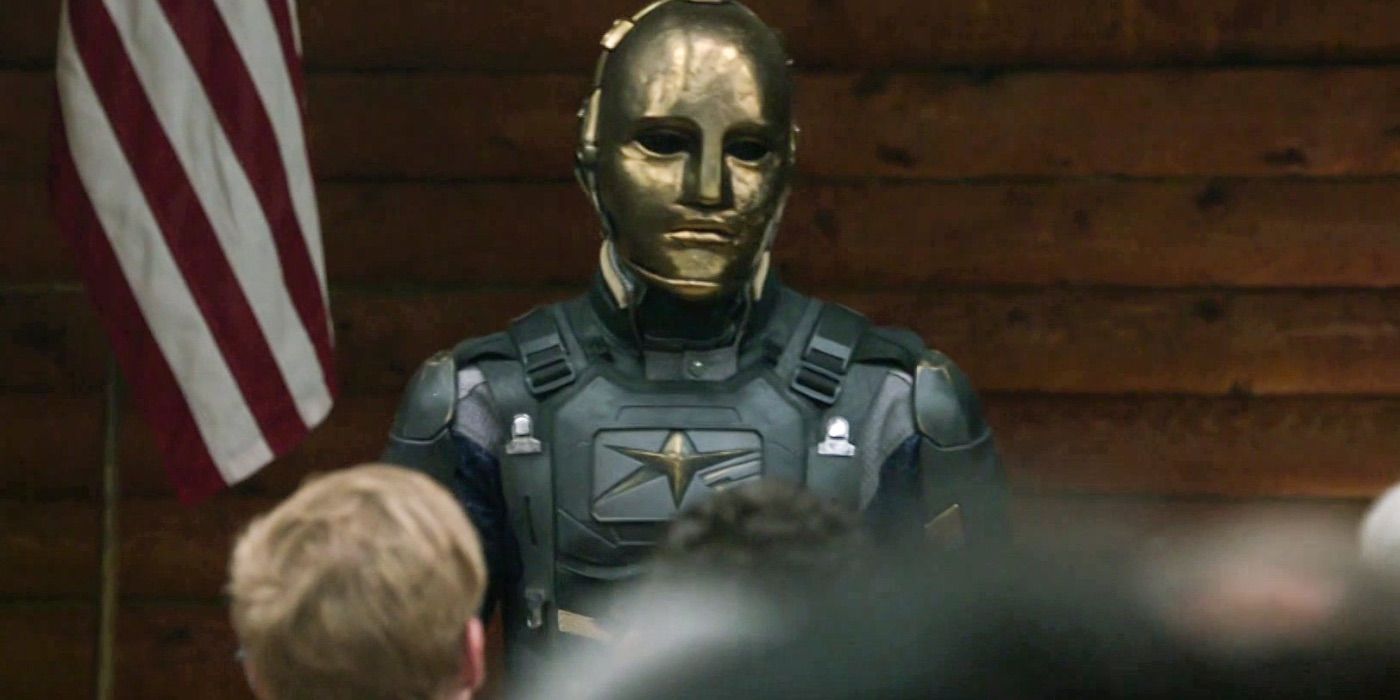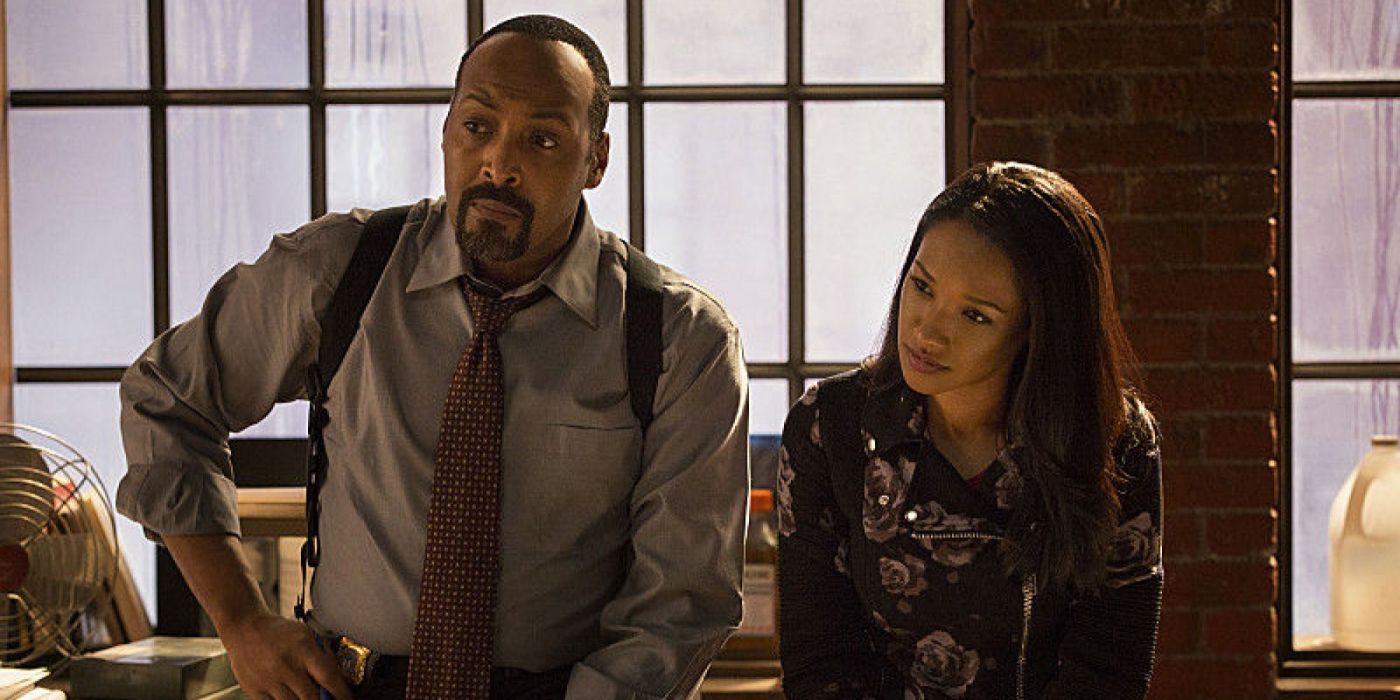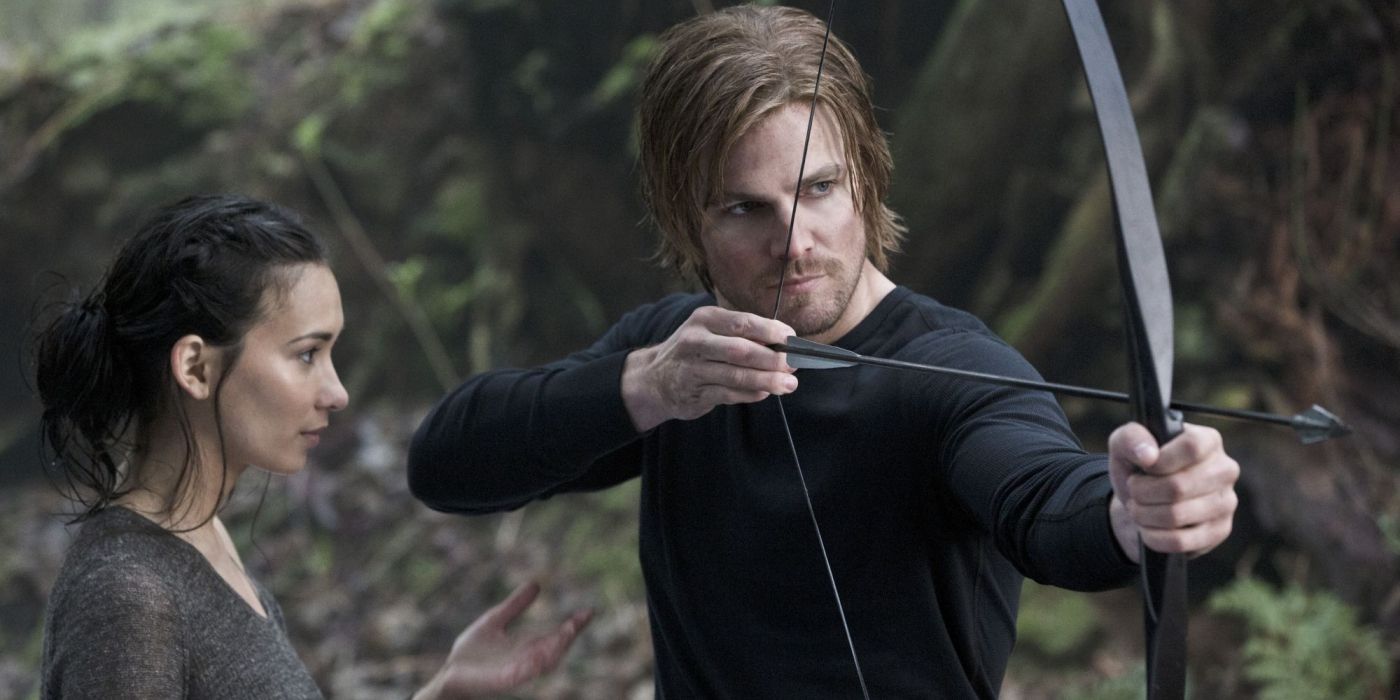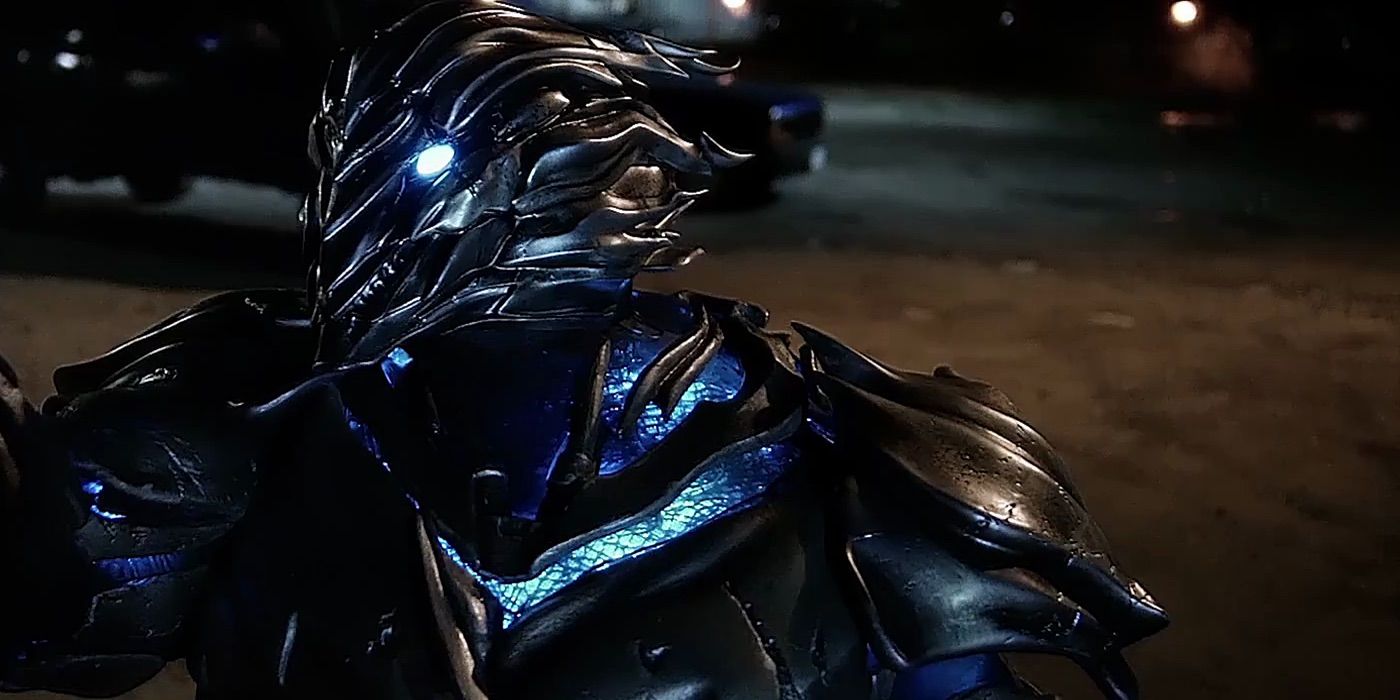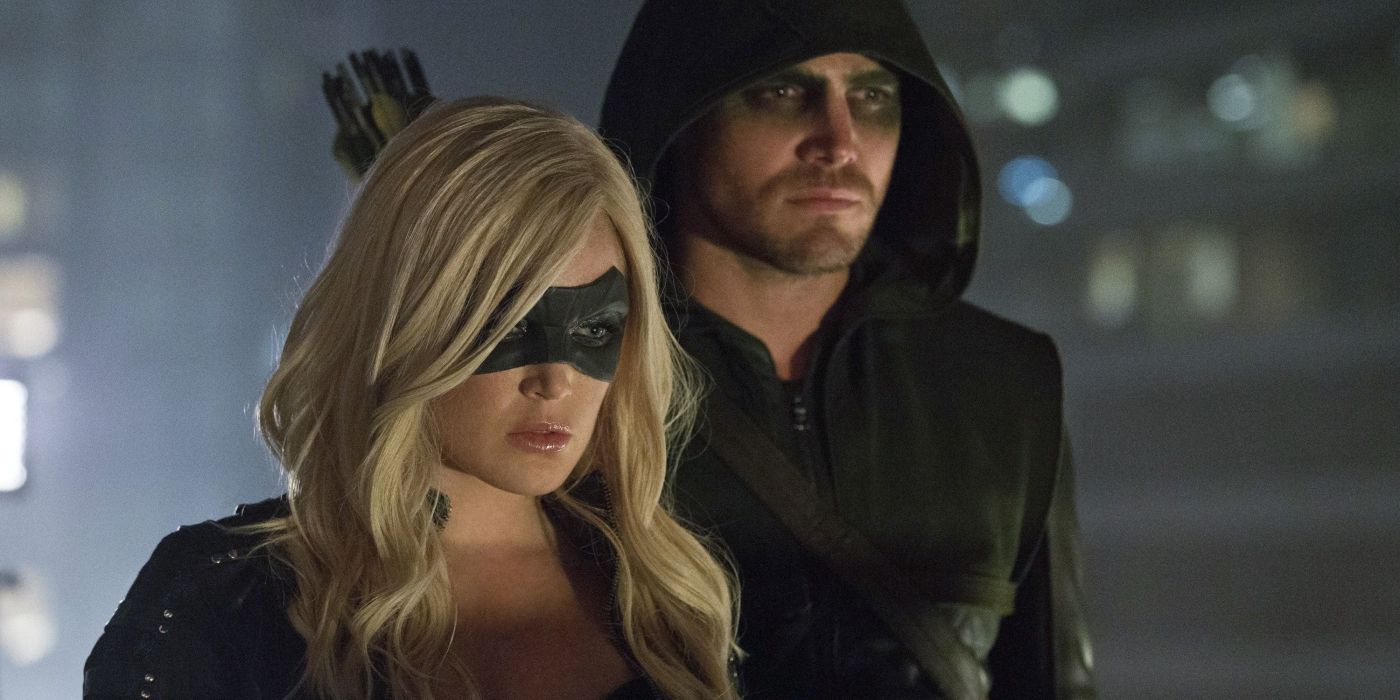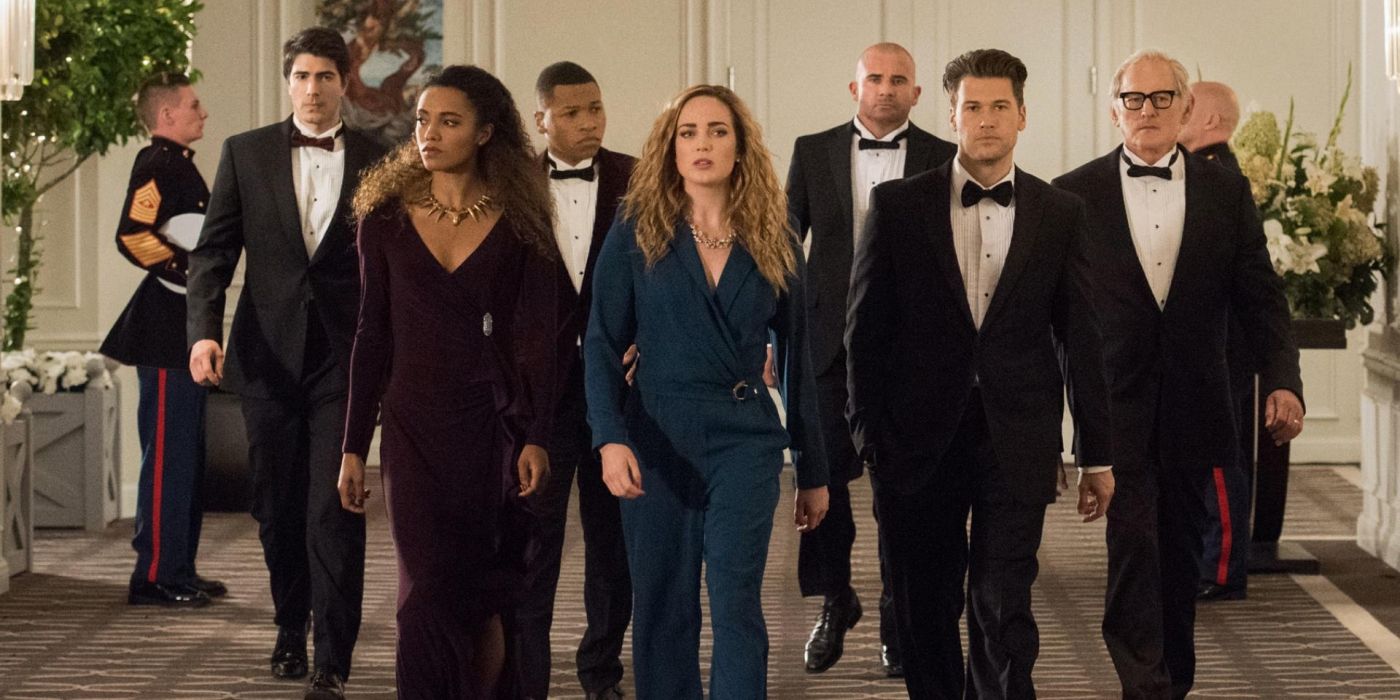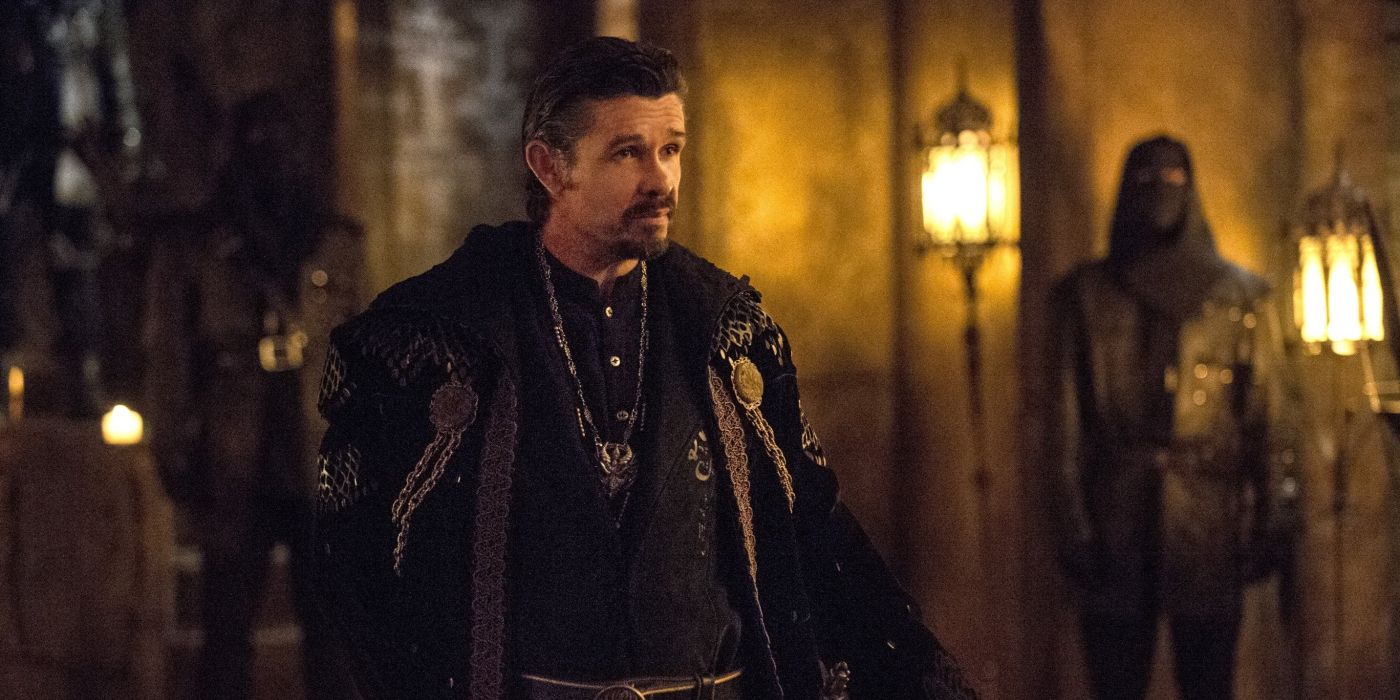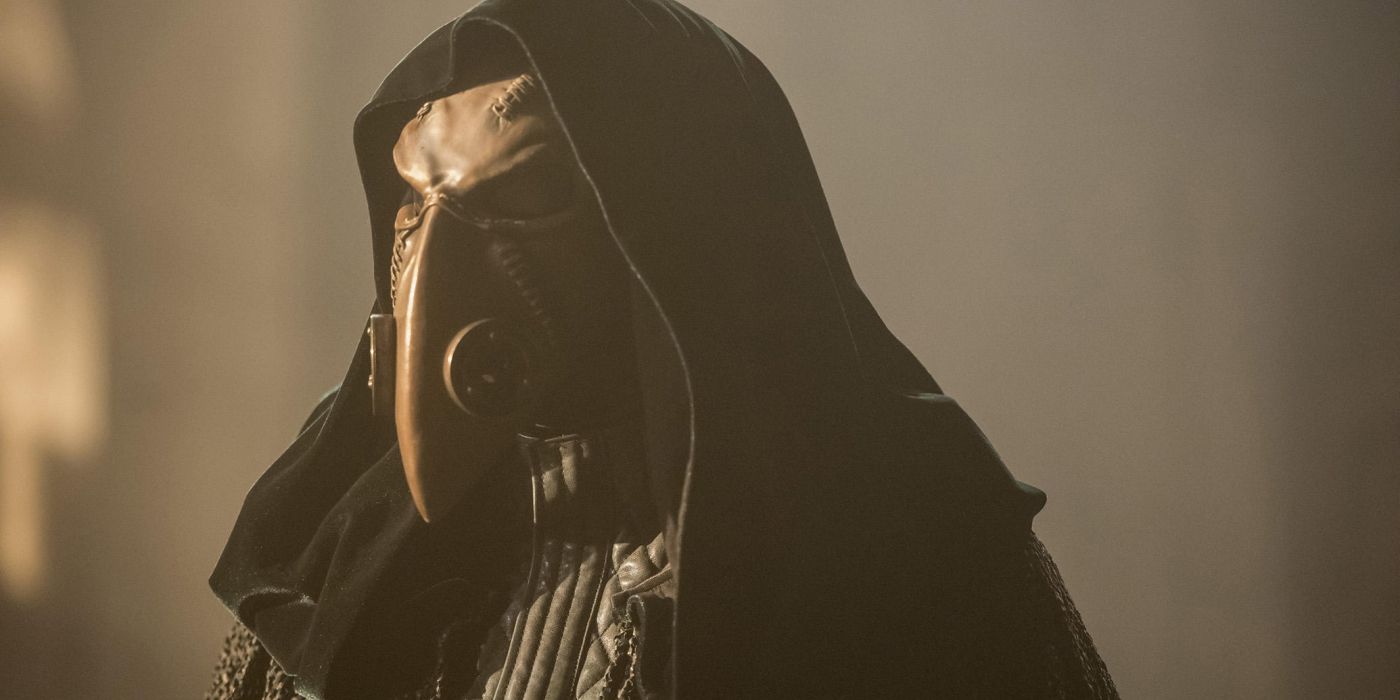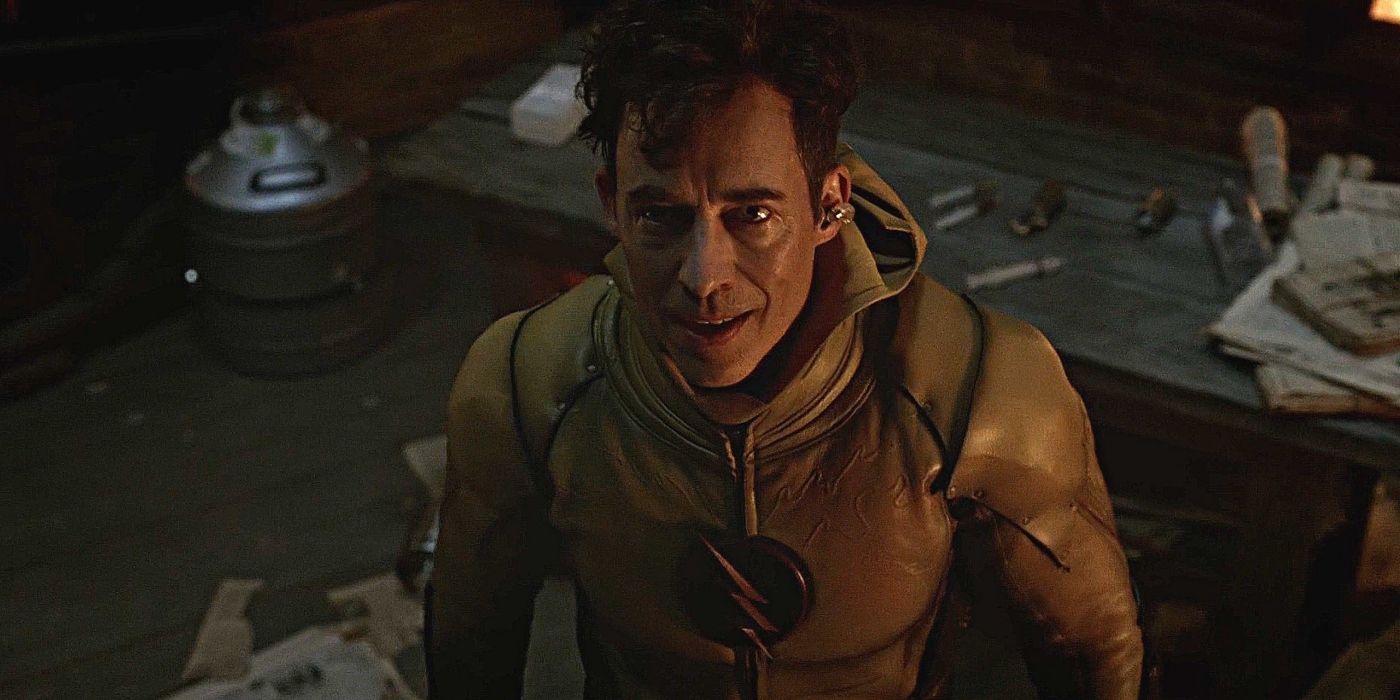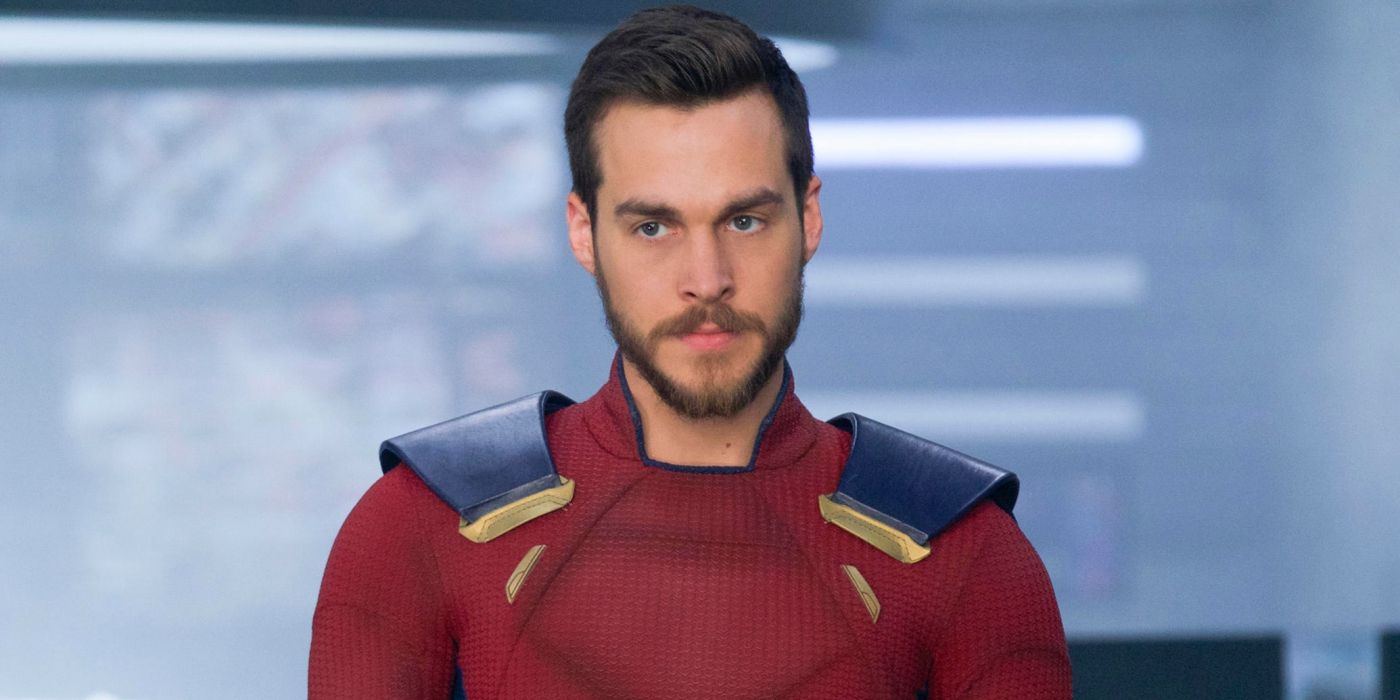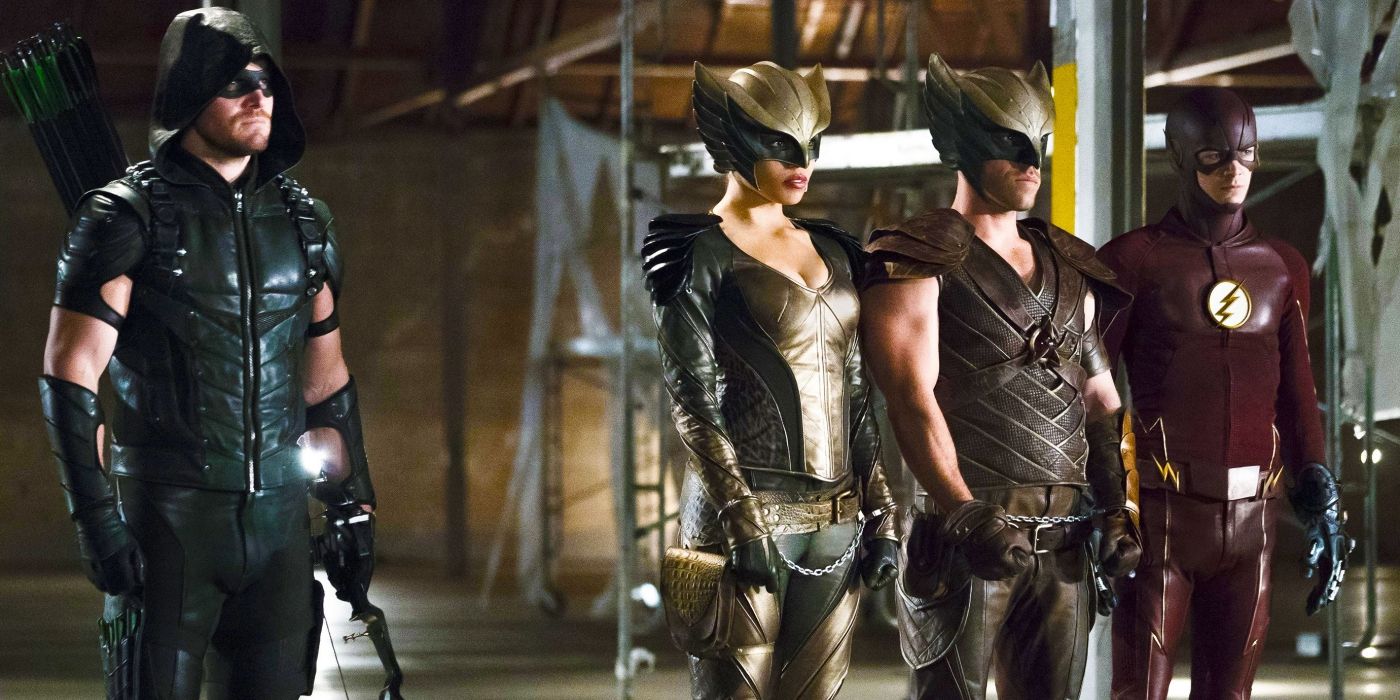Since its inception with the advent of Arrow, The CW’s Arrowverse has explored several facets of the DC Universe. In some ways, the franchise’s exploration feels incredibly faithful to the source material from which it is derived. In other ways, however, the Arrowverse has evidently taken several liberties with regard to DC mythos. Often, the liberties taken culminate in something refreshing, fascinating even. Characters that were previously of little significance have become far more interesting and risen in popularity courtesy of the Arrowverse's giving them a moment to shine. Thus far, this has been true of heroes, villains, and everything in between. In addition to changing the status quo with certain aspects of DC lore, The CW’s shared universe of superhero shows has also introduced a number of original characters, a few of whom have made their way into the comics.
While much of the above warrants extensive praise, not all of the Arrowverse’s alterations to the DC Universe have been met with adoration. In fact, there exists a handful of changes, big and small, that are widely considered unfavorable. The disdain, for instance, may stem from the changes to a character’s origins failing to truly encapsulates the character’s finer qualities. Or, the changes may simply fail because they do nothing to build upon what was originally established in the pages of comics. The following list will examine 10 changes the Arrowverse has made to DC canon that everyone seems to approve of, and 10 changes that are not favorable at all.
LIKE: ORIGINAL CHARACTERS
The Arrowverse has introduced a few original characters into DC mythos. John Diggle, Sara Lance, and Alex Danvers are the most notable. Each is special in their own right, bringing something unique to the Arrowverse it would've otherwise lacked. As such, it'll be interesting to see how these three are further integrated into future comics.
Throughout much of Arrow, Diggle has served as the angel on Oliver's shoulder, the grounded, wiser man that keeps the vigilante's morals in check. Sara's growth across Arrow and Legends of Tomorrow, from troubled ex-assassin to a ship captain who's learning to love, has been incredible. And, there are few things as wholesome on television as the sisterly bond between Alex and Kara/Supergirl, in the field and out of it.
DISLIKE: CONSTANTINE DRAKON'S FATE
Constantine Drakon's fate in Arrow remains rather unfortunate. The character is only present for a fleeting period of time during the show's pilot, where he serves as body guard to Adam Hunt, the episode's villain. In a brief, but brutal battle with the hooded vigilante, Drakon loses his life. Thus, one of DC's most formidable martial artists spends his first live-action appearance meeting his demise at the hands of a rookie vigilante.
In the comics, Drakon has a rich history of being a well-trained assassin. In fact, when he first fights Green Arrow, Drakon easily defeats the Emerald Archer. The assassin also merits interest due to his close ties with Deathstroke. It seems a shame that none of this received exploration in Arrow's earlier seasons.
LIKE: DAMIEN DARHK'S POWERS
The Damien Darhk in comics and the one who debuts in Arrow's fourth season share a connection to the criminal organization, H.I.V.E. Essentially, this ends the similarities between the two versions of this previously little known character. In the Arrowverse, Darhk's character sometimes seems formidable beyond reason.
With the use of dark magic, the villain has access to a wide array of powers and abilities. Additionally, he's been immortal, a member of the League of Assassins, an Heir to the Demon, and more. In short, Damien Darhk as the Arrowverse depicts him, is worthy of consideration as overpowered, especially when compared to his comic counterpart. He may not be remembered as the best Arrow villain, but his time on Legends deserves applause.
DISLIKE: BARRY INHERITS SOME OF WALLY'S COMIC MYTHOS
Pre-Crisis Barry Allen is about as interesting as sitting water. When Wally West adopts The Flash mantle after Barry's sacrifice, he brings flair to the character, which receives plenty of expansion in the following decades of comics. Wally's adventures as the Scarlet Speedster are so intriguing, in fact, that The Flash TV series transfers much of that mythos to Barry Allen. This includes powers that were once exclusive to Wally, Wally's relationship with Linda Park, and more.
Certainly, this all makes for fascinating television, especially early in the show's run. However, trouble comes when Wally West himself debuts. Some arcs cannot be explored with him, because the show has already exhausted them with Barry. It is unfortunate, to say the least.
LIKE: BLACK SIREN'S ROLE
Black Siren first appears as an alternate version of Black Canary in a Justice League episode, "Legends." While she serves as a member of an alternate Earth's Justice Guild, its only female member, she doesn't actively participate in the team's crime-fighting adventures. Rather, her role rests in tending to household chores.
Obviously, the Arrowverse's Black Siren is nothing like the cartoon character from which she's derived. The CW's version debuts as Earth-2's Laurel Lance, an underling of The Flash's Season 2 villain, Zoom. In the seasons since then, she's been on somewhat of a redemptive path in Arrow, which remains intriguing to watch. Who knew subverting expectations with Black Siren would culminate in such an interesting character arc?
DISLIKE: AGENT LIBERTY
In the comics, Agent Liberty is a hero, complex and flawed in many ways, but a hero nonetheless. Supergirl’s fourth season, so far, has taken the character in an entirely disparate direction. To describe him succinctly, this version of Agent Liberty is a fear-mongering, dangerous activist. His extreme world views aside, Supergirl’s iteration of the character also hasn’t been well-developed.
While Agent Liberty’s extremism is born of tragedy, his transition from average joe to hateful villain happens too quickly. This especially holds true since he once acted as the voice of reason. Still, there are several episodes left in Season 4. Supergirl doesn’t have to provide him a hero's journey, but it would be nice to see the villainous track he’s on receive more depth.
LIKE: THE WEST FAMILY
Pre-Crisis Barry Allen does not meet Iris West until he moves to Central City as an adult. In The Flash, however, Central City is Barry’s hometown. He grows up with Iris as a best friend. After his mother loses her life and his father is convicted for the crime, Barry moves into the West household.
This represents a big shift for the character, especially since Barry and Iris eventually fall in love. Yet, it’s a fun dynamic to watch on screen, particularly Barry’s father-son relationship with the West family patriarch, Joe. Their bond is an admirable one that truly deserves recognition as one of the Arrowverse’s best original ideas.
DISLIKE: VANDAL SAVAGE
Vandal Savage had the misfortune of being introduced in the lead up to Legends of Tomorrow’s pilot season. His full integration into Legends as the Season 1 villain unfortunately did nothing to help establish him as a character worthy of interest. This is saddening, as Savage remains one of DC’s more compelling foes, evidenced by his continued appearances throughout cross-media ventures.
The villain’s connection to the Hawks most notably damages his formidability on Legends. They’re his crux, both physically and narratively. Because of this, Savage loses his life by the end of the pilot season, never reaching his true potential. It’s a shame he couldn’t have debuted after the show finally found its stride.
LIKE: GREEN ARROW'S ORIGINS
Green Arrow’s origins have changed a handful of times in the comics, but none have been quite the same as that which is presented on The CW’s Arrow series. However, his post-Crisis origins do involve an island upon which he becomes stranded. Still, the tale presented in Arrow seems rather unique.
Most interesting about what the TV series explores is the Queen family dynamic. Oliver’s mother and father are both corrupt individuals, people he wishes to, in some fashion, redeem via his own good acts. Lian Yu also deserves acclaim as an intriguing idea, particularly since, over the course of the series, it becomes emblematic of Oliver’s personal hell.
DISLIKE: SAVITAR
The Savitar on display during The Flash’s third run shares almost nothing in common with his comic book equivalent. The villain introduced in the 1990s was his own person, a pilot struck by lightning who soon became obsessed with speed. That obsession garnered the attention of others, who joined in his madness, serving under him as followers.
There are notes of this present in his origins on The Flash, but they’re ultimately undercut by his being an evil Time Remnant of Barry Allen’s from the future. This Savitar, too, has an obsession, which rests solely in a desire to see Barry suffer extensively. Essentially, The Flash’s depiction of Savitar remains one of the Arrowverse’s most disappointing story arcs to date.
KARA'S BEING RAISED BY THE DANVERS FAMILY (LIKE)
Prior to Supergirl’s late 2015 premiere, Kara didn’t have a connection with the Danvers family. Following the show’s debut, bits of her origins from the TV series were adapted into comics. For instance, similar to the show, Jeremiah and Eliza Danvers take Kara in. However, they are assigned as her handlers by the D.E.O. Contrarily, in Supergirl, it’s Superman who entrusts a young Kara Zor-El into the care of the Danvers.
Of course, the show’s introducing them into continuity also makes way for Alex, with whom Kara grows up alongside. Their sisterly relationship arguably serves as Supergirl’s bedrock, and is counted among the Arrowverse’s best bonds.
DISLIKE: GREEN ARROW AND BLACK CANARY RELATIONSHIP
The relationship between Green Arrow and Black Canary remains one of the most maturely written in the comics. They’ve struggled with complex feelings towards one another, and a whole host of other issues that real couples regularly combat. To an extent, the same can be said of the complexities behind Arrow’s Oliver and Laurel romance. Whether or not their hardships have been maturely depicted demands debate.
Curiously, the show masters the comic book dynamic of the two while Sara Lance is the Canary. Watching them work together in the field is a treat that never receives its due. In the end, however, Arrow takes Oliver’s love life in a completely different direction. If nothing else, it’s at least a unique spin on a decades old narrative.
LIKE: CONCEPT OF LEGENDS OF TOMORROW
The concept behind Legends of Tomorrow, wherein a group of heroes traverse through time to right villainous wrongs, is not novel. The Time Masters, who received their own series in the 1990s, constitutes a team of heroes led by Rip Hunter. Similar to the Legends, Time Masters correct aberrations in the time stream.
A key difference between the two can be found in who the teams consist of. Original Time Masters were characters created specifically for the team. A later iteration of the group saw the recruitment of characters like Batman and Green Lantern. Legends, however, is made up of secondary Arrowverse heroes, who were no longer useful to their respective shows. Lesser known DC characters have also debuted on the series. It’s brilliant.
DISLIKE: RA'S AL GHUL'S FATE
Ra’s al Ghul is by and large considered one of Arrow’s worst villains, only matched by Damien Darhk. Much of it has to do with Ra’s’ presence in the series. Historically, this character casts a dark shadow on whichever narrative he partakes in. He’s an ominous threat with his reach widespread uncontested. Yet, Arrow does not faithfully depict this side of him.
Furthermore, Ra’s al Ghul’s defeat seems rather swift. After a formal introduction in early Season 3, Oliver defeats him rather easily by season’s end. It’s a move that doesn’t feel earned, neither for Oliver nor Ra’s. Even worse, barring Nyssa’s fleeting appearances, the League of Assassins storyline falls flat. Hopefully, some of this will be rectified in the future with Nyssa and Talia.
LIKE: SUPERGIRL AND LENA LUTHOR ARE ALLIES
In the comics, Lena and Supergirl don’t interact much. However, their friendship receives in-depth exploration during the limited series, Supergirl: Cosmic Adventures in the 8th Grade. Meanwhile, Supergirl turns Lena Luthor into a central figure in the Kryptonian’s adult life.
As her best friend, Lena offers Kara the grounded relationship she’s unable to achieve elsewhere. As Supergirl’s ally, Lena arguably represents something a little more. A Luthor and a Super, as Lena herself once put it, make for strange bedfellows. Their companionship, though currently strained on the Lena and Supergirl front, remains intriguing to watch. Lena challenges Supergirl, questioning her intentions when necessary. Given Lena’s Season 4 arc of trying to create meta-humans, it’ll be interesting to see how else their relationship evolves.
DISLIKE: ALCHEMY
During The Flash’s third season, Alchemy debuts as a character who can give powers to people who remember having them in the Flashpoint timeline. Apart from amassing a group of followers and serving under the thrall of Savitar, Alchemy does little else. In fact, his key contribution to the series is in giving Wally West his Speedster abilities.
Interestingly, Alchemy isn’t any more significant in The Flash comics from which the character derives. Therefore, that his presence on the TV series does not incite more intrigue comes as no surprise. Still, because the Arrowverse has expertly transformed B-list and C-list characters into household names, it’s a shame Doctor Alchemy failed to translate well to live-action.
REVERSE-FLASH (LIKE)
Recently, during Season 5, The Flash seems to have finally teased the reasoning behind Eobard Thawne’s hatred for Barry Allen. Like his comic counterpart, Thawne grows up a fan of Barry’s Flash, which eventually develops into an unsavory obsession. Whether The Flash’s Thawne is prompted to ruin Barry’s life after discovering he’d become his hero’s nemesis remains to be seen. Either way, Reverse-Flash has for several years been a compelling foil for the Arrowverse’s Scarlet Speedster.
There are times when Reverse-Flash’s involvement feels excessive, though. Barring potential budgetary concerns, why he was “Crisis on Earth-X’s” evil Speedster remains a mystery. Still, when the series rolls credits on its final episode, Eobard Thawne will likely be remembered as one of its finest characters.
DISLIKE: MON-EL'S ORIGINS
Mon-El’s tenure on Supergirl is contentious. Much of said contention surfaced once his backstory received exploration. Rather than being the noble servant to the Daxam’s unlikable Prince as he initially claims, Mon-El is the reviled Prince. Throughout the universe, apparently, his frat boy-like behavior has become the stuff of legend, earning him a bad name even on Krypton.
In the show’s third season, attempts are made to rectify Mon-El’s unfavorable characterization. Whether or not his evolution resonates remains debatable. Regardless, the origins presented on Supergirl are nothing like those featured in the comics, mostly because Mon-El’s origin story has undergone several alterations. In truth, Supergirl’s version could’ve culminated in something special, yet it just doesn’t seem to have gone as intended.
LIKE: ZOOM
The Flash’s version of Zoom seems a melding of villainous Speedsters, such as Professor Zoom and Savitar from the comics. All in all, what the TV series uniquely orchestrates for its iteration of the villain ensures him a spot among the Arrowverse’s best big bads.
Obsessed with becoming the fastest man in the multiverse, and perishing because of it, Zoom is a Speedster from Earth-2 who will do anything to get what he wants. If this doesn’t prove frightening enough, his background as the deranged Hunter Zolomon definitely does the trick. That terror intensifies whenever he appears, too, thanks to his all black attire, warped cowl, and demonic voice, the latter of which comes courtesy of horror icon Tony Todd.
DISLIKE: THE HAWKS' CONNECTION TO VANDAL SAVAGE
There have been a few iterations of the Hawkman and Hawkgirl mythos that connect them to ancient Egypt, similar to the origin story they have in the Arrowverse. Yet, none place Vandal Savage in the mix. Considering the way in which the story unfolds in Legends of Tomorrow, Vandal’s absence with regards to the Hawks in the comics makes all the more sense. It simply doesn’t work.
Physically and narratively, Vandal weakens the Hawks and vice versa. Their story becomes one of perpetually running from an evil entity they never fully understand. It’s a crippling construct that renders the Hawks useless to the Legends. Furthermore, it means they, unfortunately, never receive their own tale independent of Vandal. This is especially disappointing, as the Hawks seem unlikely to return.

